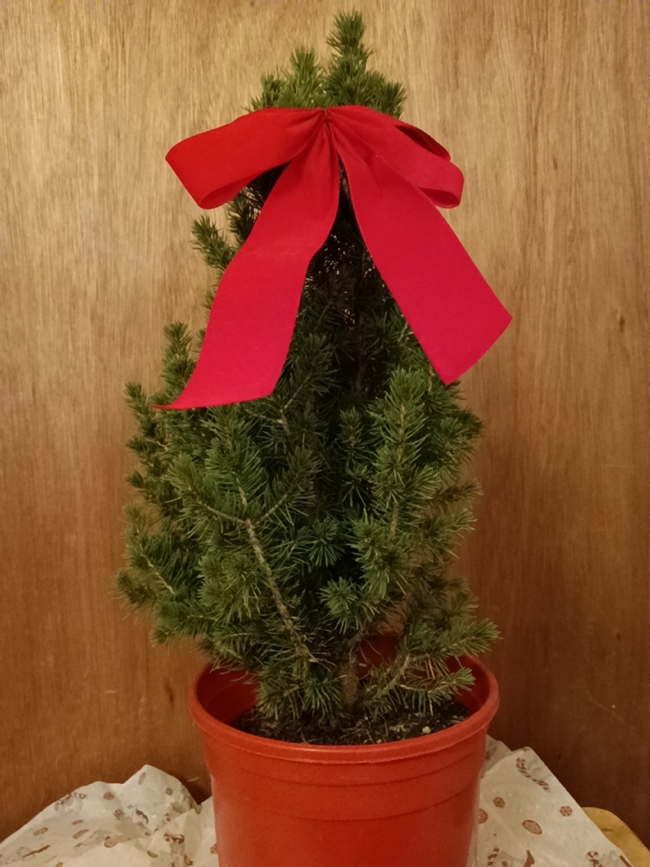- Author: Kathy Low
Besides poinsettias, during the holidays I like decorating my home with living Christmas trees. Unfortunately the past couple of years the big chain retailer I regularly shop at only carried large living Christmas trees, which I ended up buying and decorating as my annual Christmas tree. The trees they sold were Norfolk Island pines, which are beautiful trees but can grow 100 – 200 feet tall, which makes them impractical to plant in most yards after the holidays. So I was delighted when I saw a big chain retailer was selling all sizes, from table centerpiece size to full annual Christmas tree size, of a dwarf tree. Specifically, they're selling dwarf Alberta Spruce trees (Picea glauca 'Conica'), also known as dwarf white spruce trees as living Christmas trees this year. One downside though is that they're only hardy in USDA zones 3 – 8 and I live in USDA zone 9.
If you aren't familiar with dwarf Alberta spruce trees, they are slow-growing evergreen trees, growing less than 4 inches per year, that keep their pyramid form. Often referred to as a shrub, mature trees only grow ten to thirteen feet tall. They can be grown in a container. They can also be pruned and used as a topiary tree.
The trees grow best in cooler climates. They don't tolerate high heat or air pollution very well. It's also intolerant of high winds. They require full sun or partial shade. They prefer well-draining acidic soil with a pH of 4.7 – 7.0. The trees also require good air circulation or they're prone to getting spider mites.
After the holidays I plan to transplant the two small dwarf trees I purchased into bigger planters and grow them in containers for a couple of years until I plant them in the yard. That is if they survive!





Curious to know the outcome. Did these survive?
Unfortunately, mine did not survive the outdoors.
Kathy
Another fully mature Dwarf Alberta Spruce (over 8 feet tall) also in Zone 9b Santa Clara County and over 30 years old has reverted is now growing like a normal white spruce. See Understanding tree reversions at https://www.canr.msu.edu/news/understanding_tree_reversions. i have pictures of both. You can contact me at Jenks.Jeff@gmail.com